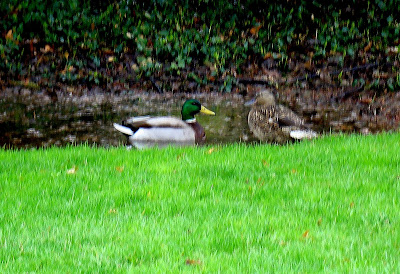
Asclepias purpurascens, (purple milkweed) is blooming albiet sparsely, for the first time ever. Added to our garden three years ago, purple milkweed is one of few asclepias that prefer part sun, although it will also grow in full sun to part shade. If these two little blooms are pollinated and set seed, the seeds will be collected and sent to Native Seed Gardeners, an organization that uses volunteer home gardeners to grow and harvest native plant seeds for restoration of protected conservation landscapes in the Spring Creek Forest Preserves in Chicago's north suburbs.
Purple milkweed is primarily pollinated by long-tongued bees, butterflies, and skippers, and Monarch butterflies feed on its foliage. Fortunately, it's rarely bothered by rabbits and deer, thanks to its bitter-tasting, toxic foliage. Although we don't have deer issues in our garden, we do have a lot of bunnies, and they can wreak havoc on vulnerable plants and shrubs here.
I found a little piece of the milkweed broken off a few weeks ago. A few lower leaves were removed, and it went into moist potting mix in our cool basement where a few summer vegetables are being started from seeds. The little cutting rooted easily with no special care, and is already growing and sprouting a crop of new leaves.

A favorite native in our garden, Spigelia marilandica, or Indian pink, just started blooming this week. Attractive to hummingbirds, Indian pink is easy grow, and prefers well-drained, fertile soil in part sun to part shade. Gail grows this in her garden too, so I think it's safe to say that while it may prefer well-drained soil, it's adaptable and will also grow in clay soil. Ours gets no more than a couple of hours of mostly dappled sunlight, and produces lots of these sweet, unusual yellow and red blooms.

Tradescantia ohiensis, commonly known as spiderwort, is native in Illinois. We have a few passalong plants - new additions to our garden this spring. I was on the fence about spiderwort for years, but its sweet blue blooms and the fact that they were free finally won me over. I'm happy to have them in our garden, and hope the bunnies will leave them alone. Spiderwort's leaves and stems are edible for humans too - one of many edible wild plants enjoyed by foragers. If they get too spready here, a few just might end up in a stir fry one day!

This is Penstemon digitalis - foxglove beardtongue, also native in Illinois, and blooming for the first time after three years in our garden. The tubular flowers attract honeybees, bumblebees, Anthophorine bees, Miner bees, Mason bees, and large Leaf-Cutting bees. Halictid bees, butterflies, Sphinx moths, and hummingbirds may also visit the very pretty blooms.
Growing in a spot that gets about an hour of sun in the morning and two more hours in the afternoon, it was slow getting established. As you can see it's blooming nicely now, although high winds and heavy rains have caused it rather poor posture. Even a bit bendy, it's taller in our garden than 'Huskers Red.' This native penstemon is a welcome addition with its pristine white blooms that show up nicely even at night.
Our garden is by no means all native, but the more of them that come to live here, the more I appreciate their quiet beauty and tough constitutions. Adding a few (or a few more!) native plants to an ornamental garden is one of the best ways to attract butterflies and other pollinators to our gardens, and to enjoy nature's beauty in our own backyards. For more Wildflower Wednesday posts, please visit Gail at Clay and Limestone.



